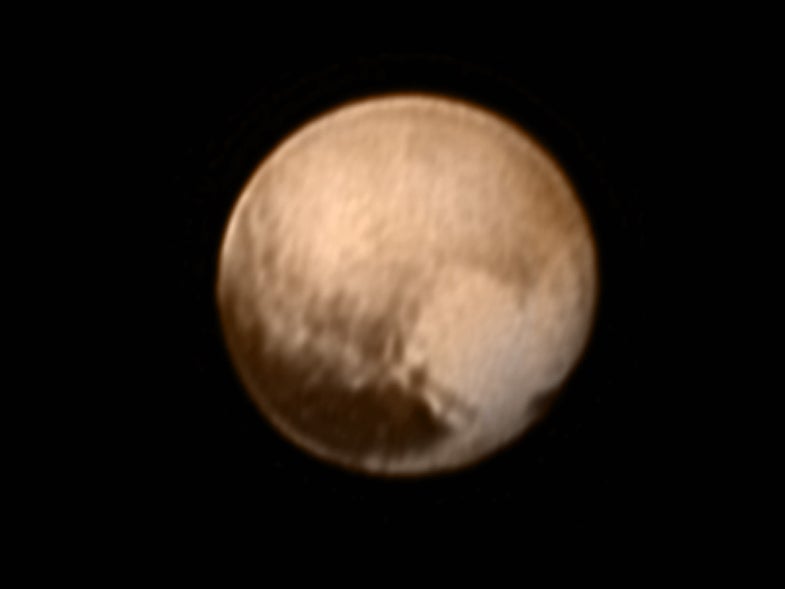Pluto Comes Into Focus
Just 3.5 million miles to go!

Hello, Pluto.
This is the latest and greatest image from New Horizons, the first spacecraft to rendezvous with the former planet. The image was taken on July 7 from a distance of 5 million miles. By now the spacecraft is about 3.5 million miles away from Pluto, but it is quickly overtaking the dwarf planet; by July 14, New Horizons will fly past Pluto within 7,800 miles of its surface, providing unprecedented looks at its surface and studying its composition and atmosphere.
For comparison, this was our best view of Pluto before New Horizons set out on its 9 billion mile journey:

A Leopard Or A Planet?
The new image elaborates on a few features that the spacecraft spotted on July 3, including the dark “whale” shape that extends for some 1,860 miles around Pluto’s equator, and a 990 mile-wide “heart” shape. The heart-shaped region may get its brightness from methane, nitrogen, or carbon monoxide frosts, while the dark patch may turn out to be a deposit of burnt hydrocarbons.

The Donut And The Whale
During the July 14th flyby, the spacecraft will be so close that if Pluto had a life-size replica of New York City on its surface, the cameras would be able to spot the lakes in Central Park.
“The next time we see this part of Pluto at closest approach, a portion of this region will be imaged at about 500 times better resolution than we see today,” said NASA Ames’ Jeff Moore in a statement. “It will be incredible!”
For the latest New Horizons news, check our Pluto On The Horizon page.